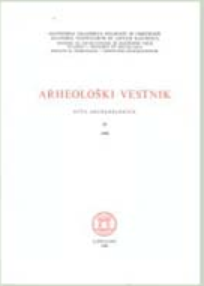The Role of the Number 7 in the Modular Composition
Abstract
Seven is the most eminent number appearing in the fairy tales, sayings, magic and religions. I became interested in the role of the number 7 as an architect study[1]ing sizes and the problems of modular multiples. The oldest sizes connected with 7 are the royal cubit of ancient Egypt and Mesopotamia and the holy Jewish cubit, consisting of 7 palms. The multiples of those cubits are divisible in seven parts. Since the modular multiples, forming the extensions of buildings and their parts, are rational numbers, the irrational architectural proportions can not be perfect, but only the approximations. Here the number 7 (as the seventh multiple or the seventh part of a module) is the key number: The ratio 1 : n can be approximated with the ratio of the whole numbers 7 : 22. The ratio 1 : j/2, is practically equal to 70 : 99 and 1 : ]/3 to 70 : 111. The dividends of the ratios 7 : 22, 70 : 99 and 70 : 111 are the multiples of 7. The com[1]mon factor of the divisors of the same ratios is 11. (See pictures 2 and 5.) Num[1]bers 7 and 11 are two terms of the additive Fibonacci series 1 — 3 — 4 — 7 — 11 — 18 — 29 — 47 — 76 ■— 123 . .. The ratio 7:11 is the approximation of 1 The simple rational approximation of the geometrical series with the coeffici[1]ent 1/2 includes the number 7 and its multiples: 5 — 7 — 10 — 14 — 20 — 28 — 40... (pictures 3 and 13). The geometrical series with the coefficient 1 + ]/2 (or 0) can be approximated with the whole numbers in the Pell’s series. The second of the additive Pell’s series 1 — 3 — 7 — 17 — 41... including 7 as the key number seems to have been suit[1]able for the composition of religious and funeral architectures (pictures 11 and 12). The property of the seventh module (or of the seventh part of it) to help approximate the irrational proportions 1 : )/2, 1:1/3, 1 : ]/5, 1 : tp and 1 : 0 created the fame of the number 7 which outlasted even its practical point of view in the ancient modular composition. In the time of Alberti (XIV century) the mystical value of the number 7 seems to have been predominant: It is certain, that Almighty God himself, the Creator of all Things, takes particular Delight in the Number Seven, having placed seven Planets in the Skies, and having been pleased to ordain with Regard to Man, the Glory of his Creation, that Conception, Growth, Maturity and the like, should all be reduc[1]able to this Number Seven. Aristotle says, that the Ancients never used to give a Child a Name, till it was seven Days old, as not thinking it was destined to Life before; because both the Seed in the Womb, and the Child after its Birth, is liable to very dangerous Accidents till the seventh day is over. (Alberti, Ten Books on Architecture, Book IX.) The decline of the ancient modular method obscured the practical point of view (and vice versa) of the modular multiples, the most eminent of them being 7. The students of archaeology and of the history of art, measuring the old architectural monuments with the modern sizes, such as meter and the English foot, and not with the original anthropometries, are neglecting the importance of mo[1]dular multiples in the architectural composition and helping the knowledge of proportioning to disappear. The revival of the modular coordination, necessitated by the industrialisation of the building trade, increased the interest in the architectural composition expres[1]sible in the multiples of a module. The contemporary architecture having generally lost the knowledge of pro[1]portioning, symmetria, analogia, numerus, and order cannot expect the develop[1]ment without the modular coordination of sizes. To discover the long forgotten precepts of ancient architectures the modular analysis with the aid of original anthropometries of the old monuments will be necessary. The archaeologists and the historians of art can contribue to this task.
Downloads
Downloads
Published
How to Cite
Issue
Section
License

This work is licensed under a Creative Commons Attribution-NonCommercial-ShareAlike 4.0 International License.
Authors guarantee that the work is their own original creation and does not infringe any statutory or common-law copyright or any proprietary right of any third party. In case of claims by third parties, authors commit their self to defend the interests of the publisher, and shall cover any potential costs.
More in: Submission chapter





